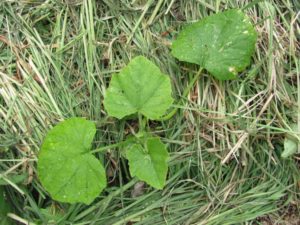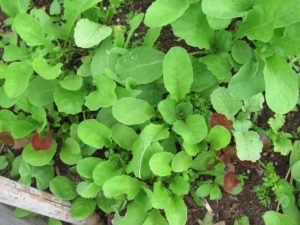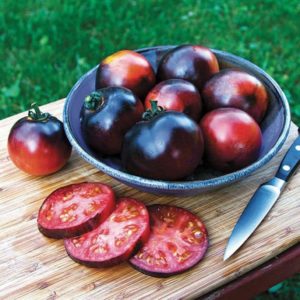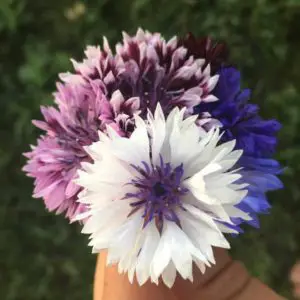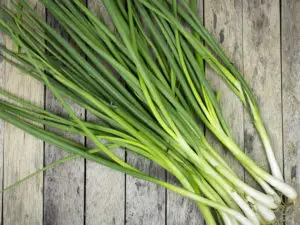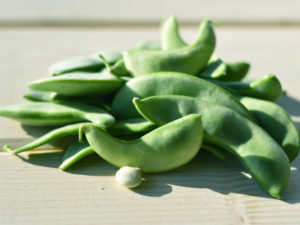If you are looking for perennial ornamental grass that is slow-growing, likes shade, and is not too invasive, you might consider planting Japanese Forest grass, also known as Hakonechloa macra.
One of the few ornamental types of grass that thrive in the shade and looks like a beautiful green flowing waterfall.
These grasses originated from the rocky and wet cliffs in the mountain of Tokaido district of southeast Honshu.
They are sometimes commonly called Hakone Grass or Golden Japanese Forest Grass.
Hakonechloa macra are part of the Poaceae family.
It is the only species in a monotypic genus and is native to Eastern Asia.
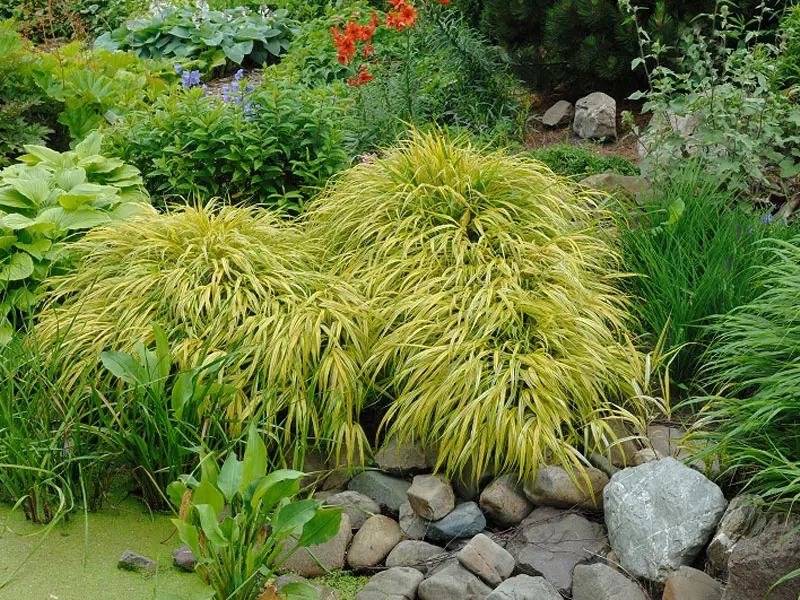
| Scientific Name | Hakonechloa macra. |
| Common Names | Golden Japanese forest grass, Hakone grass |
| Hardiness | Hardy in Zones 5-9 |
| Indoor or Outdoor Plant? | Outdoors |
| Sun Exposure | Full sun to partial shade |
| Water | Weekly or more to keep soil moist |
| Size | 12-18 inches tall, 18-24 inches wide |
| Soil Type | Rich, moisture-retentive soil |
| Soil pH | 4.5 |
| Flower | Small green flowers often camouflaged by the leaves |
| Growing Difficulty Level | Requires little maintenance |
Japanese Forest Grass Appearance
Japanese Forest Grass is a perennial that forms a cascading mound that arches downward.
Any slight breeze can cause its light long leaves to ripple.
The mounds are dense and abundant with long slender leaves.
These waterfall effect-like foliages can range in color from solid green, green and white, green and yellow, green and pink, and solid yellow/gold.
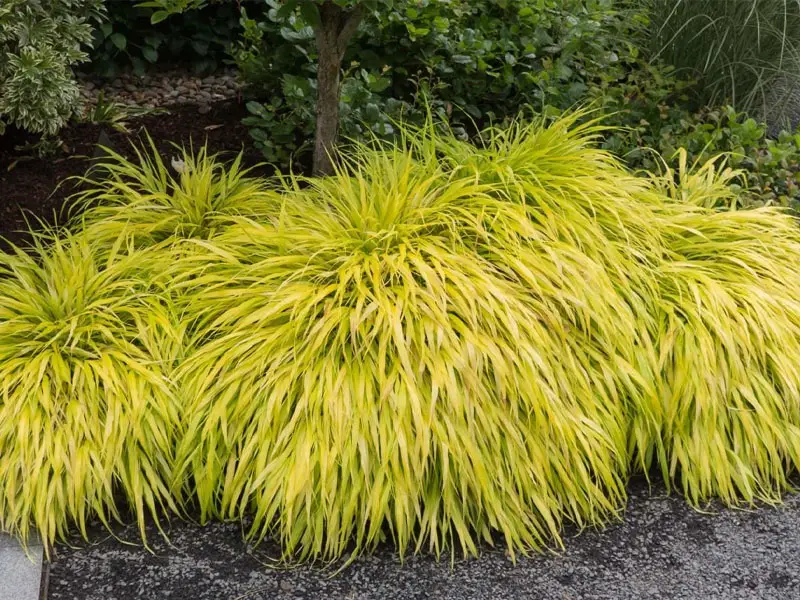
The grass ranges in height from 12 inches to 28 inches tall and approximately 18 inches to 24 inches wide.
Delicate green flowers appear in mid to late summer but might be camouflaged by the green leaves.
Copper and orange shades of leaves are seen in the fall, especially in cooler climates.
Some of the subspecies are:
Hakonechloa macra ‘All Gold’ is a solid leaf that ranges in color from yellow to dark lime green, depending on sun exposure.
The more the plants are in direct sunlight, the more yellow and less green they become.
If the plants get too much sunlight the leaves will dry and burn.
Hakonechloa macra Beni kaze (“red wind” in Japanese) has green leaves throughout the summer but turns an interesting and beautiful bright red to reddish-purple in the fall when the weather is cooler.
The plants are approximately 18 inches to 30 inches in height.
Hakonechloa macra Nicholas was developed by Frenchman Oliver Bennato Chez as a dwarf version of the Hakonechloa macra Ben Kazie species.
The plants average a 6-inch height or 9 inches in bloom.
Hakonechloa macra Aureola has multi-colored leaves, stripped gold, and Granny smith-apple green.
This is the most common variegate cultivator.
The height ranges from 10 inches to 14 inches.
This subspecies has won the prestigious AGM (Award of Garden Merit) from the English Royal Horticulture Society.
Hakonechloa macra ‘Sunny Delight’ has the reverse color pattern of subspecies H. macra Aureola.
The main leaf is green with a narrow yellow center stripe while the average height ranges from 12 inches to 14 inches.
It is known to be vigorous.
Japanese Forest Grass Growing Guide
Japanese Forest grass thrives in shaded areas that are slightly cool.
Choose a spot under a tree or in a path that is shaded and not in direct sunlight.
Make sure the soil drains well.
The leaves are brightest when grown in the partial shade.
If grown in full shade, the color changes lightly and fades to a lime green shade.
If planted in full sunlight, the foliage bleaches to white in cooler climates.
When the temperature gets too hot, the leaves will burn.
The leaves change from orange to reddish in the fall, then turn a light brown as it goes dormant for winter.
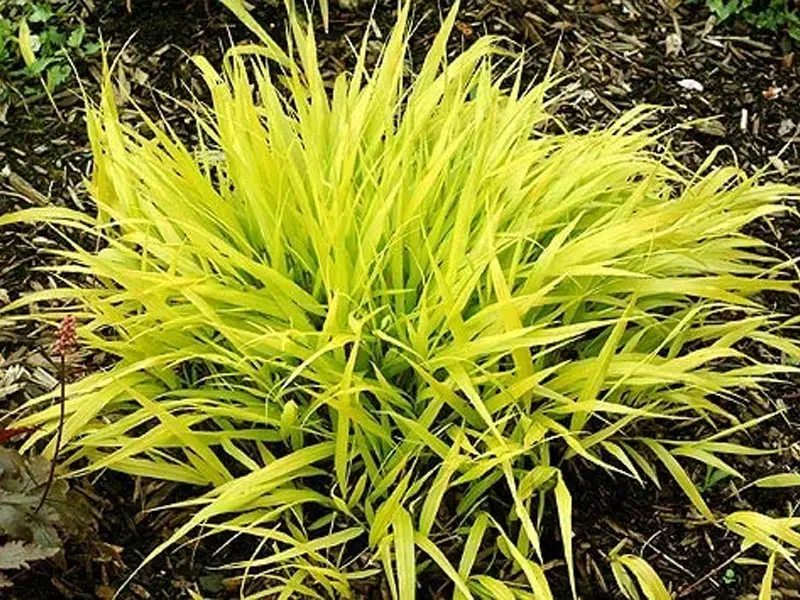
Seed or Seedlings?
Since seeds are challenging to come by as the seeds are difficult to see, it is best to plant from seedlings already grown and available at the nursery.
Choose healthy seedlings without any grey spots or disease.
When to Plant?
The grass needs time to settle into their environment and do not do well in dry heat.
They are dormant during the winter. Either plant in early spring or in early autumn.
Preparing the Soil
Prepare the ground by breaking up the soil and removing any hard clumps or rocks.
You can add organic matter as long as it is free of disease and not high in nitrogen.
Gardeners can also plant plants in containe
How far apart should I plant the seedlings?
Plant seedlings 18 to 24 inches apart from center to center.
Holes should not be too deep as ornamental grass doesn’t like to be buried.
The root ball should be approximately ½ inch from the surface but not so shallow that they float away when watered.
Give them an excellent initial soak and keep the soil moist but not soggy.
Organic mulch can be placed around the base of the plant to help conserve moisture once they establish themselves.
It usually does not need fertilizer; however, if you fertilize the soil, wait until after the first burst of new growth in the spring.
Water
Keep the plants moist but not soggy.
Try to water closer to the ground as spraying can cause fungus disease, but it is rare.
Light
This plant may burn in full sun and lose color intensity in full shade; however, when grown in colder climates, like the upper Midwest, it can be grown in full sun (according to the Wisconsin horticulture extension service of the University of Wisc.) .
Soil
Moist, humus-rich soil in the cool shade is perfect for this plant.
Potting /Repotting
Japanese Forest grass can be planted in a container as an attractive garden decoration.
The leaves cascading down a ceramic pot can be an added focal point.
Ensure the pot has holes at the bottom to encourage proper drainage and water often to keep the soil moist.
Potted plants can be divided and repotted into more containers provided the plants have been established.
They may not have initial growth on top as they need time to redevelop their root system.
Propagation and Pruning
Dead leaves should be cut back in late winter and early spring. Before new growth starts in the spring, cut back old foliage to ⅓ of the plant in place.
Trimming cold season grasses too aggressively and harshly can cause irreparable damage—mulch annually in winter with well-rotted manure or compost.
If needed, clumps can be divided and replanted in the Spring.
The grass spreads by rhizomes that are slow-growing.
Once the grass clumps have been established, as new foliage emerges in the spring, divide the clumps and propagate new plants every 2-3 years or as needed.
After transplanting, they tend to sit for several weeks as they work on their root system before emerging in their waterfall-like foliage.
Advantages of Growing Japanese Forest Grass
Hakonechloa is very adaptable as a ground cover along paths, under trees (like Japanese Stewartia), or as a potted container plant accent in one’s garden.
They are easy to grow and require little maintenance.
As compared to Hakonechloa Aureola, H. macra are more sun and drought tolerant, as well as being cold resistant. Once established, both species are fairly easy to cultivate.
Japanese grass adds a beautiful texture and flow to other shade-loving perennials, like epimediums, a terrific ground cover that also likes shade.
Epimediums have spring flowers in various shades of yellow, beige, pink, lavender, purple, red, and white.
Ferns and heucheras also go hand in hand with Hakonechloa.
Heuchera’s leaves are green, some with purple veins and interesting silver and white patches.
During the winter, they take on bronze and purple tones.
Although some sources suggest Hellebores as companion plants to Hakonechloa grasses, all parts of Hellborreos plants are poisonous.
Clumps of Japanese Forest grass spread by sending out rhizomes; like most grasses, they are creepers, but they are slow-growing, so they are not considered invasive like many grass species.
Japanese forest grass tend to be plants that are strong, hardy, and long-lived.
Japanese Forest Grass Diseases, Pests, and Problems
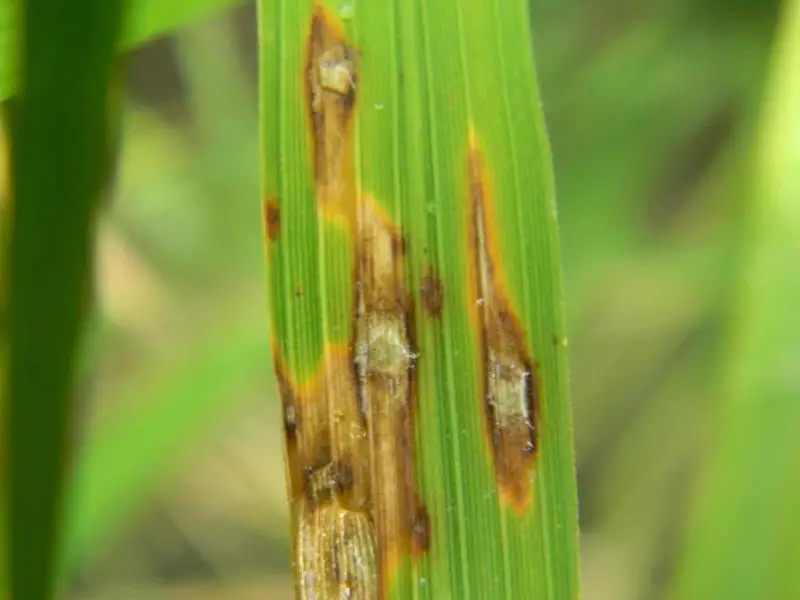
There are few reports of disease on Hakonechloa plants, but one problem sometimes crops up, grey spots on the leaves and blight caused by the fungus Magnaporthe (Pyricularia).
Studies from Ohio indicate that this is the same fungus that causes grey spots on perennial ryegrass and fescue.
It is a widespread problem in the Midwest of the United States, especially on golf courses and athletic fields during warm, humid weather with frequent rainfall.
The fungus is dormant in winter as mycelium on infected plant debris.
Plants that are grown in high nitrogen fertilizers and spaced together are more likely to be damaged.
You can use fungicides as a treatment.
Prevention includes starting with healthy plants and making sure the plants are properly spaced, mulched, and not drought-stressed.
Avoid high nitrogen fertilizers and water from the bottom, avoiding sprinkle irrigation.
Note: Japanese Forest Grass is deer resistant and has mixed reviews for rabbits.
Japanese Forest Grass Seeds
Grass 1 Quart Green Leaves

Premier Plant Solutions

FAQs
How do you use Japanese forest grass in a garden?
Japanese forest grass looks excellent as a border on a path, under a Japanese Stwertia tree, or in a container pot as an accent piece in your garden.
Can I start Japanese Forest plants by seed?
It is an easy-to-grow perennial plant.
Seeds are not readily available, so it is best to buy plants and divide them once they are established.
The H. macra and H. macra Aureola are easier to find in plant nurseries.
You have to search more for the H. macra Ben Kaze and Nicholas varieties.
What does Hakonechloa mean?
Hakone is an area of Japan where the grass originally comes from.
The word “chloa” means grass, which has the literal meaning “Plants from Japan”.
Are Hakonechloa macra plants toxic?
Hakonechloa macra do not pose an immediate threat to cats and dogs, although there have been incidences of pets having an allergic reaction to ingesting the plant.
Doing thorough research before introducing hakonechloa macra into your garden is vital if you have pets at home.
If you have a dog, you might want to look into homemade dog urine repellents because you won’t want your dog urinating in places where it shouldn’t in your garden.
Note: A warning about dogs and Hakonechloa plants could not be verified. Hakonechloa is not on the ASPCA list of toxic plants for animals; however, the lists are always changing.


